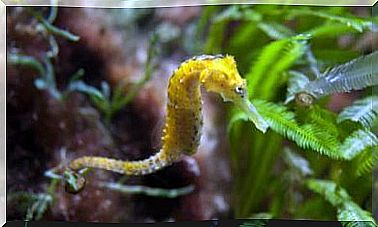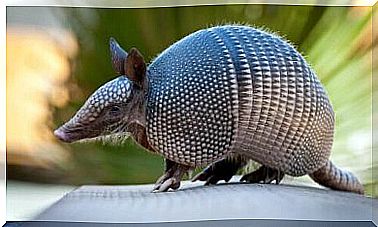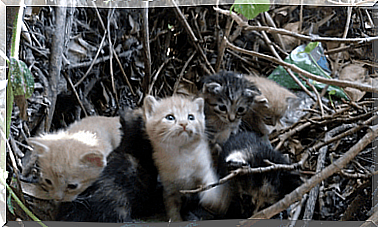Arctic Hare: Characteristics, Behavior And Habitat

The arctic hare (Arctic Lepus ) is a species of rodent that belongs to the Leporidae family. Currently, it is recognized as one of the biggest hares that inhabit our planet.
The body of this hare is adapted to live in the very low temperatures of polar cold. Therefore, it is a very resistant animal of remarkable beauty.
Physical Characteristics of the Arctic Hare
The arctic hare, also called the polar hare, is a large rodent that usually measures between 20 and 22 cm in length and weighs between 10 and 12 kg.
It is one of the few animals that can survive the extreme cold of the polar region. This is because your body has developed a number of special features and characteristics to withstand these harsh conditions.
The fur of this animal is very thick, to prevent heat loss. Its abundant coat also helps conserve heat and protects it from the weather.
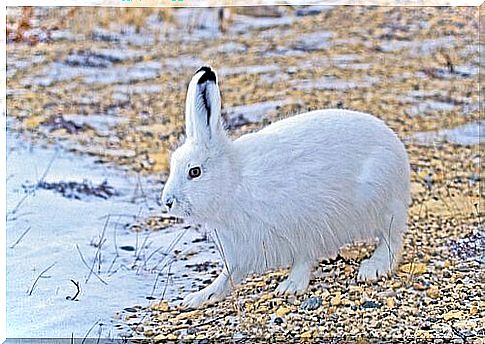
Likewise, the ears of arctic hares are designed to conserve heat. Therefore, although they are placed higher than those of other hares, they are smaller to reduce the surface that comes into contact with the cold.
Strong paws with powerful nails allow you to dig holes to protect yourself and look for food underground. Furthermore, its feet are visibly larger than its paws, to offer the possibility to run in the snow without sinking or getting “stuck”.
These characteristics are added to a well-developed musculature and great flexibility, which allows these hares to escape their predators with great agility.
We can also observe that polar hares have a remarkable ability to camouflage themselves . Its fur is practically white during the winter, but it gains brown or gray tones in the summer.
These peculiarities allow arctic hares to easily camouflage themselves, despite the changes experienced by the environment in different seasons.
natural habitat and food
The arctic hare, as its name suggests, is native to regions near the Arctic. At the moment, its population is distributed in part of the territory of Canada, Greenland and Alaska.
As there are few animals that can adapt to polar climates, the arctic hare has few predators. However, they also have a low availability of prey to hunt and eat.
Therefore, your ability to camouflage and hide underground is essential for your survival.
Regarding diet, polar hares are omnivorous animals. Because in their natural habitat they find limited food availability, their diet can incorporate almost all the vegetables available in their environment, such as wild fruits, leaves, herbs and woody plants, as well as small insects.
Behavior and reproduction of the polar hare
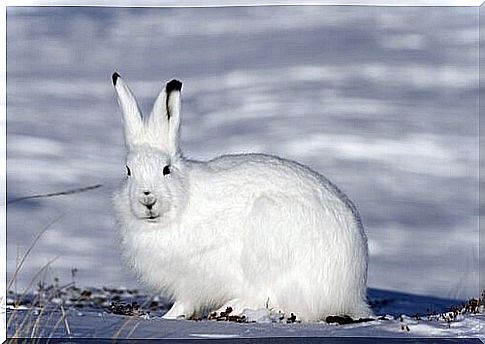
In general, polar hares live alone and come together only to mate during the breeding season. They can also be seen in groups at certain times, probably due to the need to conserve heat in extreme cold.
The polar hare’s mating season is between April and May, that is, during spring. During this period, arctic hares spend more time outside their dens and are more sociable.
In their daily lives, these peculiar hares take longer walks, venturing to expand their territory into areas they avoid during winter, for example.
When forming a pair, these rodents do not return to their original burrows, but create a special “refuge” to mate safely. If there are several females in their territory, males can form different pairs during the breeding season.
After a brief gestation, females usually give birth in early summer. For each breeding season, polar hares usually give birth to five or six cubs.
Parents will be responsible for protecting and teaching their puppies only during the first few weeks of life. Then the young hares will be ready to survive on their own.
As they mature very quickly, their life expectancy is shorter than that of other hares. An arctic hare usually lives for between three and five years, although some specimens may have a longer lifespan.


